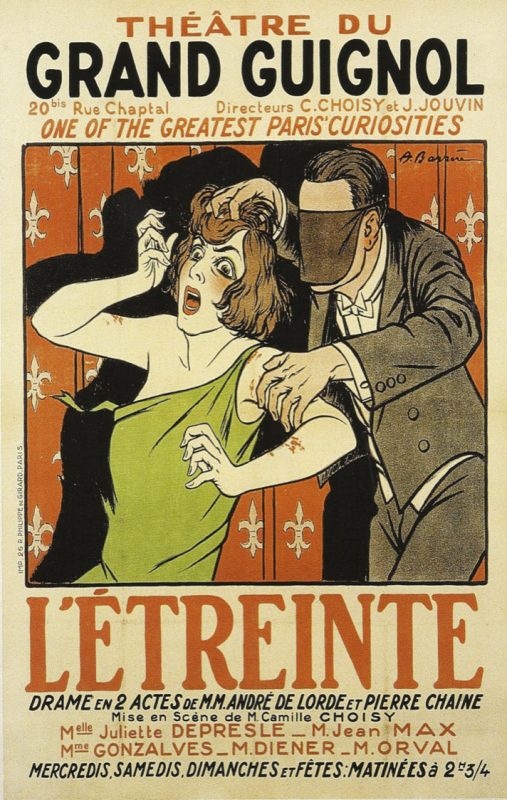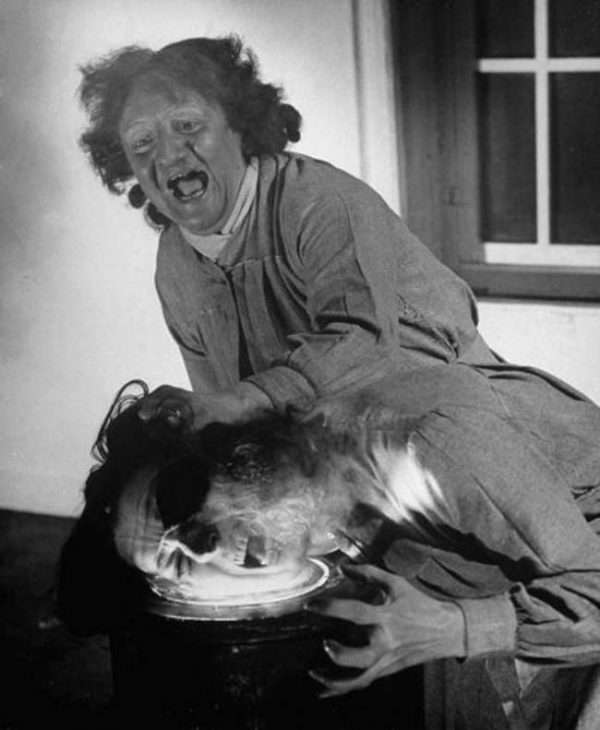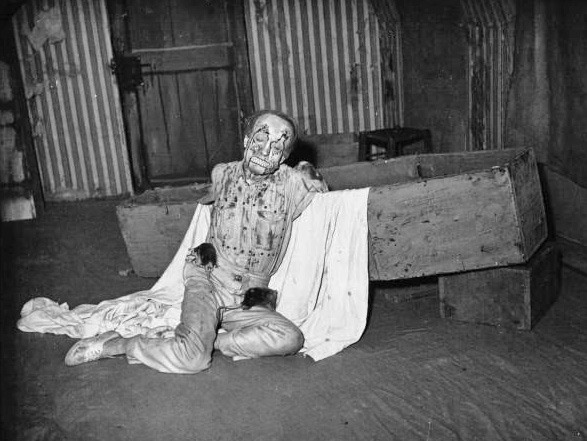Who knows how much stage blood the Grand Guignol spilled over the years? It came in varieties. The darker, more viscous blood showed older, coagulated wounds; the lighter stuff was used for fresh slashes. This attention to detail developed from the Naturalism movement that encouraged realism onstage. It stuck with the theater from the opening of its doors on April 13, 1897, to its closure in November 1962.
Our first scene took place in Paris’ Théâtre Libre. Playwright Oscar Méténier co-founded it in 1887. The theatre performed his rosse plays. These short dramas focused on the seedy Parisian underbelly. He followed two patterns for them. Either underclass characters lampooned bourgeois values or the story was based on lurid headlines ripped from sensational news broadsheets called faits divers. The Théâtre Libre closed in 1896.
Méténier opened the Grand Guignol with the desire to intensify the Théâtre Libre experience. The audience would experience “hot and cold showers” of emotion. Like Méténier’s rosse plays, an evening at the Grand Guignol followed a formula: a slapstick farce, a drama, a comedy, a gruesome horror and finally another comedy. While all of the plays aimed at realism and shared an amoral streak, the horrors made the Grand Guignol name.
Playwright André de Lorde, “ the Prince of Terror,” set the second scene. He ramped up the horror through collaboration with Dr. Alfred Binet of the Psychological-Physiological Laboratory of the Sorbonne. The Prince’s plays often took place in clinical settings like lunatic asylums or operating rooms. Over one hundred of his plays were performed, including The Final Torture, The Dead Child, The Merchant of Corpses and The Dead Rat, Room No. 6. His stated goal was to write a play that would send the audience rushing of the theater. It never happened, but the Grand Guignol claimed that an average of two patrons fainted per night!
The Grand Guignol carried its theatricality offstage. The name came from Guignol, a character standard to the Lyonnais version of Punch and Judy plays. The audience could expect adult parallels to the brutal puppet shows. The building at 20 rue Chaptal was a convent, then a blacksmith’s, and then a chapel. The Grand Guignol kept the original wooden angels and utilized pew-like seats and confessional-like private boxes. Red and green lights cast a woozy pall.
The theater operated for seventy-five years. During World War Two, it served as a weird diversion for the troops. The war may have primed the theater’s end. Manager Charles Nonon said, “We could never equal Buchenwald. Before the war, everyone felt that what was happening on stage was impossible. Now we know that these things, and worse, are possible in reality.”
For more onstage violence and gore, read Theatre of Fear and Horror: The Grisly Spectacle of the Grand Guignol of Paris 1897-1962 by Mel Gordon (Feral House: Port Townsend, WA, 2016).




There are no voices yet... Post-script us a message below, won't you?